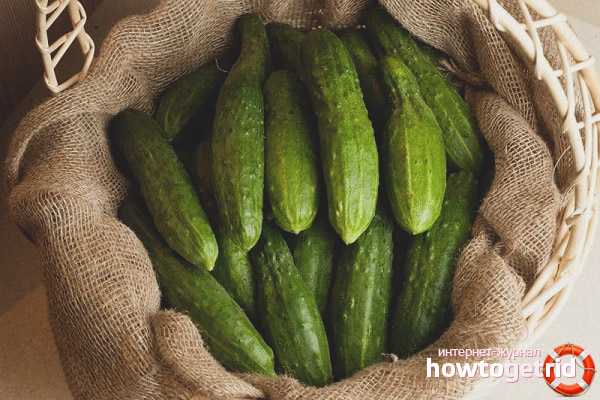The content of the article
High-yield vegetables are always popular with gardeners and farmers. Variety Relay refers to hybrids characterized by high productivity and excellent taste. It is intended for cultivation in greenhouse constructions and in open beds in a garden or in fields. The variety is suitable for transportation to other regions without loss of taste and commercial appearance.
Grade characteristics
Fruiting begins 55-65 days after the appearance of the first sprouts. It is distinguished by good endurance of adverse weather conditions, persistent innate immunity to common viral diseases. Cucumbers need pollination. In the role of a pollinator, the hybrid variety Gladiator is ideally suited. The variety grows well in the shade, the fruits have an attractive appearance.
If agricultural cultivation techniques and care conditions are observed, a very high yield can be obtained. Up to 45 kg of ripe cucumbers are removed from one square meter.
Variety Description:
- Bushes are endowed with weak branching. Flowering occurs by the female type. The leaves are large, saturated green, have a wavy border.
- Fruits of a spindle-shaped elongated shape. The skin is dark green in color; on the surface there are large tubercles with white spikes and white stripes.
- The average weight of one cucumber is approximately 180-200 grams. Fruits grown in greenhouses can weigh 250 grams.
- In length, cucumbers grow from 15 to 22 cm. The diameter of the fruit is about 4.5 cm.
- The structure of the pulp is tender and juicy, with a pronounced cucumber aroma. When cracked, the fruits crackle.
Variety Relay is used for pickling, pickling and pickling, in the summer it is the most favorite component of vegetable salads.
Growing Features
Variety Relay does not need to pinch and form the stem. On the bushes, and so most of the ovaries are concentrated on the main stem, and the side shoots grow slowly. For growing cucumbers in a greenhouse, it is important to observe the optimum temperature of + 16- + 18 degrees. With the onset of ripening and fruiting, the temperature is increased to +22 degrees. If you do not pay attention to the temperature regime, and do not observe it, then male ovaries will form on the plants, which do not bear fruit.
Watering
Water-loving cucumbers are sensitive to watering. The procedure should be carried out every day, preferably at the same time. This is best done in the evening after sunset. Water the plants with settled warm water under the root. Leaves and shoots are only slightly sprayed.
Waterlogging should not be allowed. This can lead to the development of root rot. If irrigation is carried out irregularly, a bitter aftertaste may appear in the fruits.
Fertilizers
Feeding cucumbers should begin with planting seeds. Before sowing, a mixture of manure with mullein is added to the wells. During plant growth, it is necessary to add nutrient complexes containing nitrogen.During the formation of ovaries and during fruiting, potash and phosphorus fertilizers are needed for the development of the fruit. Mineral and organic additives are very important for the full growth and development of cucumbers.
Diseases and pests
The probability of infection with cucumber mosaic in the variety is quite low. When all the conditions for cultivation and care are met, then this can not be afraid. Pre-treatment of soil and seed, as well as moderate watering will help to prevent the appearance of rot on the roots. If plants are not protected from low air temperatures, then powdery mildew can hit the bushes. For prevention and to combat diseases, plants are treated with special insecticidal preparations.
A good remedy for pests is the proximity to strongly-smelling plants such as onions, dill and garlic. In addition, if aphid or tick is found on the bushes, it is possible to spray the bushes with infusion of garlic or onion husks.
Reviews gardeners
- Victoria Valentinovna, 45 years old: I love cucumbers since childhood. I used to grow them even at home. Now, after buying a summer house, I grow cucumbers in a greenhouse. I liked the Relay variety for its taste, beautiful appearance, and unpretentiousness in leaving. Harvesting is simply grandiose. I always tie the lashes to the net, so there are no difficulties in leaving. The most important thing is not to forget to water in a timely manner. Otherwise, cucumbers may start to bitter.
- Semen A., 65 years old: Relay cucumbers like my whole family. Cucumbers are crispy, tender and sweet. If well watered, then they do not have a bitter aftertaste. From the fruits we make various preparations for the winter. Larger cucumbers grow in greenhouses. Top dressing should be applied about 3-4 times. It is necessary to water the variety every day, if there is no rain.
Video: growing herringbone cucumbers











Submit